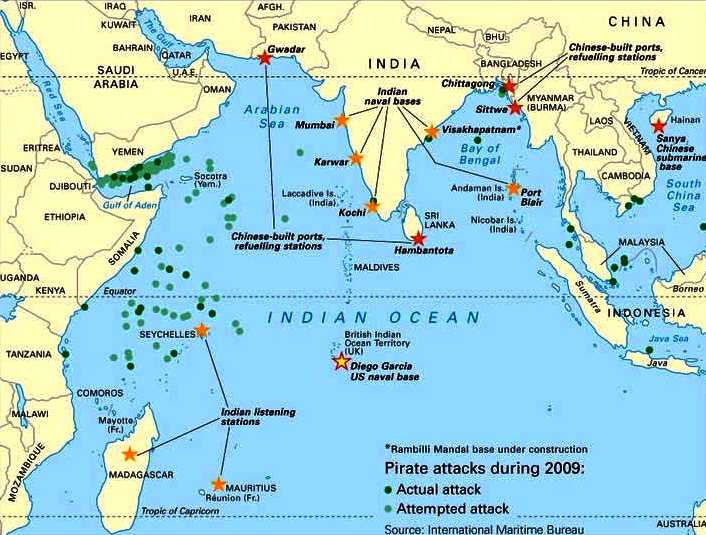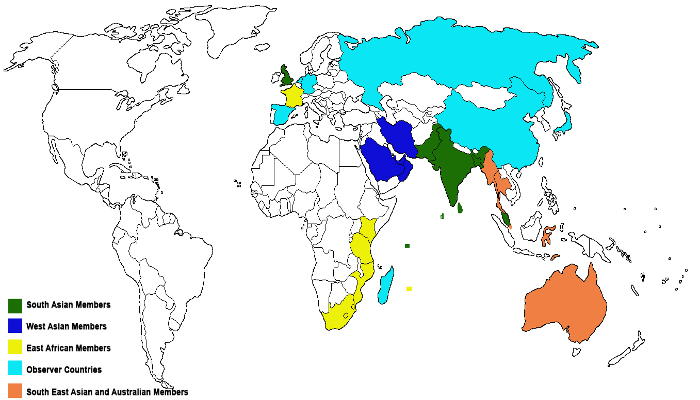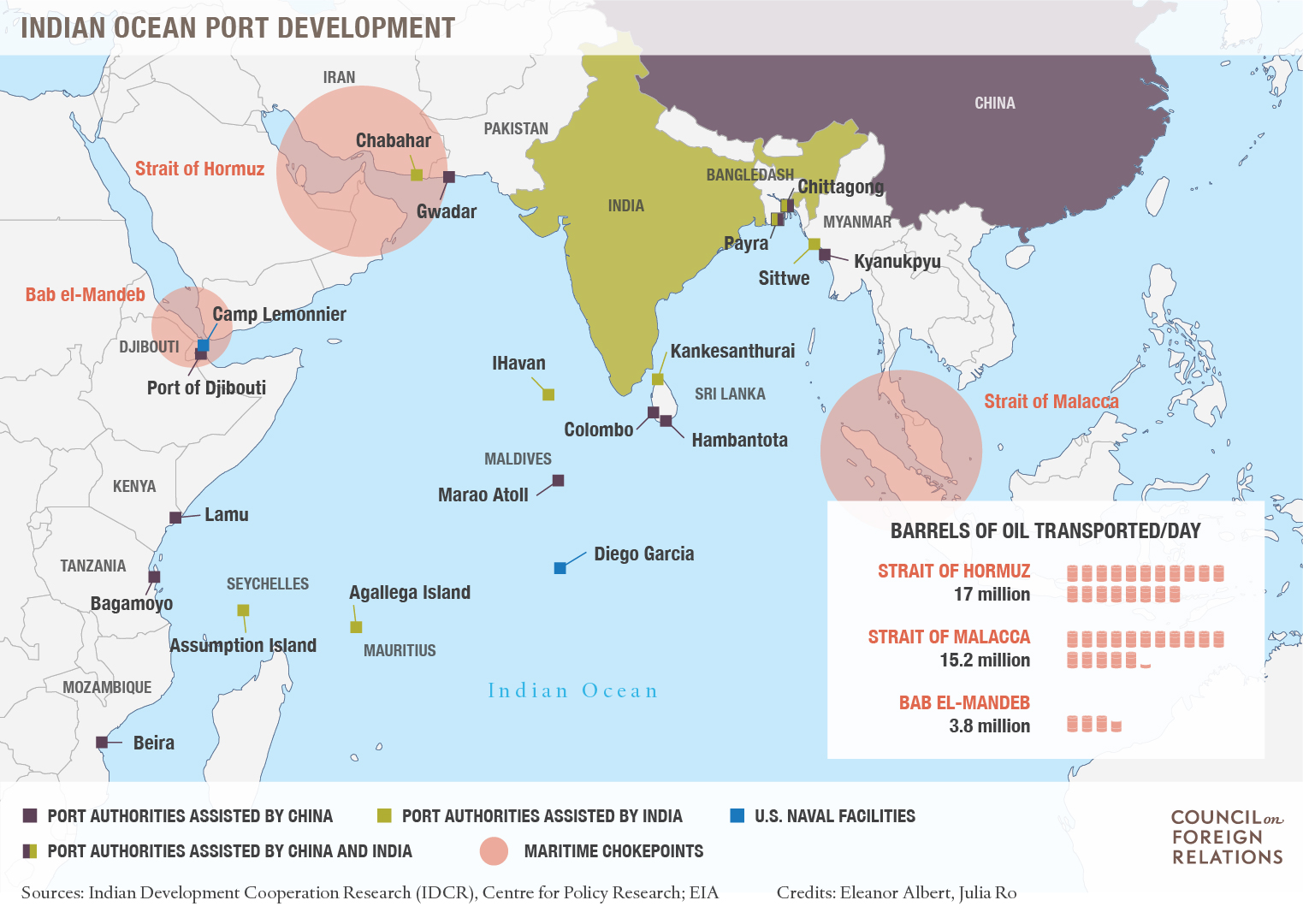International Relations Class 07
REVISION OF THE PREVIOUS CLASS (5:08 PM):
- India was engaged in Sri Lankan ethnic crisis and civil war because India wanted to avoid the refugee crisis.
- Sri Lanka did not take appropriate steps to implement the changes under the 13th Amendment, as mentioned under the India-Sri Lanka Accord 1987.
- Even after getting Indian help in the Fourth Eelam War 2006-2009, no concrete steps have been taken.
Lessons Learnt and Reconciliation Commission:
- It was appointed by Mahinda Rajapaksa in May 2010 after the 26-year-long civil war.
- The commission aimed to investigate the reasons for the ethnic crisis and to suggest a peaceful way forward.
- The commission was based on the lines of the Truth and Reconciliation Commission which was set up in 1995 in South Africa after the 1960-1994 apartheid regime.
Fishermen issue:
- Katchatheevu Island:
- The island was originally under the Raja of Ramnad and it later came under the Madras Province.
- 1974- International Maritime Boundary Agreement gave the island to Sri Lanka, but Indian fishermen got the rights to fish in and around Katchatheevu island
- In a similar agreement in 1976, the fishing rights of Indian fishermen were taken away.
- As of now, Indian fishermen can only dry their nets, take rest and participate in the St Anthony's festival on the island.
Fishermen issues:
- There have been arrests of Indian fishermen, confiscation of boats, and even firing.
- It is also perceived as Tamil fishermen falling prey to the Sinhala navy.
Issues with Sri Lanka:
- Violation of maritime boundary.
- Encroachment on the livelihoods of Sri Lankan fishermen.
- Ecological concerns on Bottom Trawling(dragging huge metal net over the sea bed) that has been banned in Sri Lanka.
- The Indian government had subsidized bottom trawlers.
- Sri Lankan fishermen rightfully complain that bottom trawling destroys marine ecology so much that no fish can be caught after trawling for some time.
Bottom Trawling:
- This is a fishing practice that includes towing a large net along the ocean floor.
- The practice is hazardous for the marine ecosystem because the sea floor gets damaged.
- This process is non-discriminatory and catches a large number of non-target species and objects along with the target fish.
- The rest products are discarded.
Steps that were taken/suggested:
- The Tamil Nadu government has many times advised taking over the Katchatheevu island or at least taking them on a permanent lease.
- The Tamil Nadu government also suggested that fishermen of the two countries be allowed to fish in each other's territorial waters (EEZ) until 5 nautical miles.
- These recommendations have been rejected by the Central government.
- The way forward must arise out of a dialogue involving the fishermen of both nations.
- There must be Standard Operating Procedures regarding dealing with fishermen of one country caught by another country.
- The bottom trawling boats could be used in Odisha coast, or be suitably modified.
- Most of the fishing boats on the Indian side are geo-tagged, but fishermen still choose to venture into Lankan waters for livelihood.
CHINA IN SRI LANKA(5:45 PM):
- Chinese presence and influence in Sri Lanka have been increasing.
- Chinese interests:
- To counter India.
- To maintain a presence in important sea lines of communication.
- Sri Lankan interests:
- Deep pockets of China.
- Diplomatic help as China is a permanent member of the UNSC and can veto resolutions against Sri Lanka.
Pieces of evidence of China in Sri Lanka:
- The Hambantota Port has been leased to China for 99 years under the condition of equity for debt swap.
- This simply means that if Sri Lanka gets unable to pay back debt, China will acquire equity stakes(ownership) in the port.
- China is the biggest lender for Sri Lanka.
- China has diversified interests in Sri Lanka including agriculture, food processing, etc.
- India is concerned regarding the growing Chinese influence in India's neighborhood.
Sri Lanka Response:
- Sri Lanka has expressed that it will follow an overall neutral foreign policy.
- And for defense and other strategic issues, Lanka will follow an India-first policy.
- Yuan Wang 5- a ballistic missile and satellite tracker vessel by China was docked at Hambantota port.
- India was concerned regarding the spying capacities of the vessel.
Steps taken by India:
- India offered help for projects such as Trincomalee Oil Farm Tanks. Matalla Air Port, etc.
- India has funded the ambulances and trained the Sri Lankan Staff for the Suwa Seria Ambulance Service of Sri Lanka.
- India is undertaking housing projects in Northern, Central, and Southern Provinces for the Tamils in Sri Lanka.
- The Buddhist connection between the two countries is emphasized as an outreach to the Sinhala majority.
Lankan Economic Crisis:
- In 2022, Sri Lanka defaulted on its sovereign debt of $51 billion.
- Its forex reserves got as low as $50 million.
Reasons for the crisis:
- Poor government policies caused the twin deficit problem- Fiscal Deficit and Current Account Deficit.
- The largest tax cuts were announced by the Gotabaya Rajapaksha when Sri Lanka needed to repay foreign debt.
- The government suddenly banned imports of chemical fertilizers and pesticides to save the forex.
- This caught farmers' input price rise and decimated their staple rice crop, driving up the food prices.
- Tourism declined after the 2019 Easter Bombing and COVID-19 pandemic.
- The Ukrainian War has pushed global food and oil prices higher.
Responses to the crisis:
- Sri Lanka approached IMF and various other countries for aid.
- India has extended a total of 5 billion dollars as economic assistance to Sri Lanka which is the essential lifeline for Sri Lanka.
- India has provided under credit line 44000 metric tonnes of urea and 16000 metric tonnes of rice to help it resolve its food insecurity.
- India has also provided drugs, medical supplies, vegetables, sugar, and wheat as humanitarian assistance.
INDIA-MALDIVES RELATIONS (6:15 PM):
- Geostrategic importance:
- Maldives' proximity to the west coast of India (barely 70 Nautical miles from Minicoy).
- Its position at the crossroad of SLOCs in the Indian Ocean.

Indian role as a Net Security Provider:
- Operation Cactus:
- It saw the Indian Armed Forces thwart a coup in the islands of the Maldives against the elected government headed by the then President Maumoon Abdul Gayoom.
- In 1988 Abdullah Luthufi assisted by a Tamil separatist organization from Sri Lanka, the People’s Liberation Organization of Tamil Eelam(PLOTE) orchestrated a coup to overthrow the elected government of Maldives.
- India was the first to assist the Maldives after the 2004 tsunami.
- India provided drinking water supplies after the water crisis in Male(Maldives capital) in 2014.
- India provided timely and comprehensive help regarding Covid 19 vaccines and other supplies.
Maldives-India relations:
- Maldives has traditionally followed "India First".
- Under Gayoom as well as under Nasheed's presidency, India had good ties with the Maldives.
- The relations between the two countries deteriorated under pro-china Abdulla Yameen.
INDIAN OCEAN REGION (6:45 PM):
Vanilla Islands
- They comprise Madagascar, Comoros, Seychelles, Mauritius, French reunion island, and Mayotte islands.
- These islands are named so because they are known for the production of the flavoring agent vanilla.
- They formed the Vanilla Group in 2010 to promote tourism.
Geopolitical importance:
- It comprises important Sea-Lines of Communications (SLOCs) through which two-thirds of the world’s oil shipments and more than 50% of the world trade take place.
- Presence of international choke points- Hormuz Strait, Suez Canal, Bab el Mandeb, Malacca Strait.
Strategic access points/Chokepoints in the Indian Ocean: Strait of Malacca:
Strait of Hormuz:
Bab el Mandab strait:
Suez Canal:
|
Geoeconomic importance:
- The region is home to 40% of the world’s offshore hydrocarbon.
- The region has very significant fisheries stock.
- The beach sand comprises heavy minerals and placer deposits.
- The Indian Ocean sea bed is rich in polymetallic nodules.

Issues in the Indian Ocean region:
- Piracy, human trafficking, human trafficking, etc.
- The Indian Ocean is part of the Indo-Pacific region which has emerged as a primary theatre in global -politics.
- There are ongoing geopolitical contests between China, the USA, France, the UK, etc.
Indian policy for the region:
- India has identified three foreign policy goals:
- I. Strengthening and deepening bilateral ties with countries of the region.
- II. Establishing India's leadership potential as the net security provider.
- III. To ensure a rule-based stable maritime order.
- The Government of India has outlined the vision of SAGAR- Security And Growth for All in the region.
Indian Ocean Naval Symposium(IONS):
- It consists of 25 members and 8 observer states.
- Its inaugural session was held in New Delhi.
- The unique aspect of IONS is that the chairmanship lies with the navies of the member countries.
- The aim of IONS is maritime security through naval cooperation.

- Three IONS working groups-:
- I.Humanitarian Assistance and Disaster Relief (HADR)
- II.Maritime Security.
- III. Naval Inter Operability & Information Sharing.
INDIAN OCEAN RIM ASSOCIATION (IORA) (7:20 PM):
- It was formed in 1997 and it was earlier known as Indian Ocean Rim Initiative and the Indian Ocean Rim Association for Regional Cooperation (IOR-ARC).

- Its Secretariat is based in Ebène, Mauritius.
- Two littoral states are not members- Pakistan and Myanmar.
Nature of IORA:
- It is an example of soft and open regionalism.
- SAARC, RCEP, EU, ASEAN, etc are some examples of Closed regionalism.
- Unlike closed regionalism, open regionalism does not limit the benefits of trade liberalization to the member countries alone.
- Trade liberalization under open regionalism would result in a general reduction of tariff rates of a country.
- It does not distort trade creation because of globalization.
- On the other hand, closed regionalism results in trade diversion (trade away from the most efficient producer of the good).
- Soft regionalism is cooperation among geographically closed countries without any formal institutional arrangement.
- It is based on pragmatism and such agreements are generally informal in nature.
- Soft regionalism can be understood in contrast to hard regionalism which is based on legally enforceable agreements and treaties.
- hard regionalism would see strict structuralization.
- IORA is tripartite in structure.
- It means that there is a representation of government, business, and academia.
- All three points- Open regionalism, Soft regionalism, and Tripartite structure are also true for Asia-Pacific Economic Cooperation(APEC).
- Decision-making in IORA is by consensus.
- Individual commitments are on a voluntary basis.
Aim of IORA:
- Initially, the aim was only regional cooperation.
- Under Chanirmams ship of India in 2012-2013, the aim was expanded to six priority areas:
- I. Maritime Safety & Security.
- II. Trade & Investment Facilitation.
- III. Disaster Risk Management.
- IV. Fisheries management.
- V. Academia & Science & technology
- VI. Tourism & Cultural exchange.
- The two cross-cutting themes have also been identified namely:
- I. Blue economy.
- II. Gender empowerment.
- In 2017, to mark the 20th anniversary of the establishment of IORA, the first leaders' summit was organized by Indonesia.
- It resulted in the short-term, medium & long-term IORA action plan and the Aspirational IORA or Jakarta Accord.
- The Council of Foreign Ministers is the highest authority under IORA and it meets once a year.
Challenges for IORA:
- Countries are at very different stages of development-Somalia, Seychelles, India, and Australia.
- The region is prone to non-conventional security threats like piracy, drug & human trafficking, etc.
- The region is also vulnerable to climate change threats like the submergence of low-lying areas, natural disasters, etc.
- The region has become a theatre for a rivalry between external powers- China, France m USA, etc.
- External powers are not concerned about the stability of the region.
- Many countries face large funding and infrastructural lags.
- No country present in the region with deep pockets like the USA or China is present.
Way Ahead:
- Frame a maritime security architecture to deal with non-conventional security threats.
- Cooperate with like-minded countries like Japan to address funding deficits and infrastructural lags in the region.
- Middle economies like India, and Indonesia should take the lead in making the platform vibrant.
- For example- In 2017, Indonesia organized the first leader's summit.
- The group should work to produce tangible results on the six identified priority areas.
- The QUAD Summit 2023 Hiroshima called upon groups like IORA to ensure peace, security & stability in the Indian Ocean region.
The topics for the next class are SAARC, BIMSTEC, Mekong-Ganga cooperation, and India-China relations.
1)
India and Bangladesh signed a Memorandum of Understanding (MoU) to allow for the use of the following ports in Bangladesh.
- Hambantota port
- Mongla port
- Chittagong port
Select the correct option from the codes given below
(a)1 and 2
(b) 2 and 3
(c)1 and 3
(d)1,2, and 3
2)
Which of the following island is in the Vanilla island group-
1. Seychelles
2. Mayoth and french reunion
3. Shrilanka
4. Coumarins
5. Madagascar
(a)1.2, 3
(b)1, 2, 4 and 5
(c)4 Only
(d)1, 2, 3, 4 only
3)
Which of the following are members of the Indian Ocean Rim Association (IORA)?
- Comoros
- France
- Bhutan
- Bangladesh
- Myanmar
- Thailand
- Pakistan
Select the correct answer using the codes given below:
(a)1, 3, 4, 5, 6, 7
(b)3, 4, 5, 6, 7
(c)1, 2, 4, 6
(d)1, 2, 3, 4, 6
4)
Consider the following statements:
1. Kachchatheevu island is the uninhabited island of Srilanka but is administered by India.
2. It is known to have the Hambantota port of Sri Lanka.
Which of the statements given above is/are correct?
(a)1 only
(b)2 only
(c)Both 1 and 2
(d)Neither 1 nor 2
5)
Arrange the following cities from North to South:
- Jaffna
- Trincomalee
- Colombo
- Hambantota
Select the correct answer from the code given below,
(a)2-1-3-4
(b)1-2-3-4.
(c)3-4-1-2
(d)4-3-1-2
6)
With reference to ‘The Indian Ocean Rim Association for Regional Cooperation (IOR-ARC)’, consider the following statements: (2015 prelims)
- It was established very recently in response to incidents of piracy and accidents of oil spills.
- It is an alliance meant for maritime security only.
Which of the statements given above is/are correct
(a)1 only.
(b)2 only.
(c)Both 1 and 2.
(d)Neither 1 nor 2.
7)
Which of the following statements is/are true in the context of the Indian Ocean Rim Association (IORA):
1) This organization aims to bring together the three major regions surrounding the Indian Ocean - Asia, Africa, and Australia - on one platform to promote regional cooperation and intercontinental trade.
2) Its Secretariat is based in New Delhi
Which of the statement/s above is/are correct?
(a)Only 1
(b)Only 2
(c)Both 1 and 2
(d)None of the Above
8)
Consider the following in respect of the Indian Ocean Naval Symposium (IONS):( Prelims 2017)
1. Inaugural IONS was held in India in 2015 under the chairmanship of the Indian Navy.
2. IONS is a voluntary initiative that seeks to increase maritime cooperation among navies of the littoral states of the Indian Ocean Region.
Which of the above statements is/are correct?
(a)1 only
(b)2 only
(c)Both 1 and 2
(d)Neither 1 nor 2
9)
Discuss the implications of China’s growing proximity with Maldives for Indian geo-strategic interests. (150 words/10 marks)
10)
Explain the significant aspects of the fishermen issue between India and Sri Lanka. What steps can be taken to mitigate the situation? (150 words/10 marks)
11)
What is Indian Ocean Rim Association (IORA)? Explain its aim and nature. (150 words / 10 marks)
12)
Indian Ocean is a pivot of global trade. Elucidate(150 words/10 marks)
Answers
1) b
2) b
3) c
4) d
5) b
6) d
7) a
8) b
Amid the ongoing economic crisis in Sri Lanka. India must offer Sri Lanka financial help, policy advice, and investment from Indian entrepreneurs. It is in India"s interest to contain the Chinese presence in the country. Comment. (150 words/10 marks).
(10 marks)



0 Comments